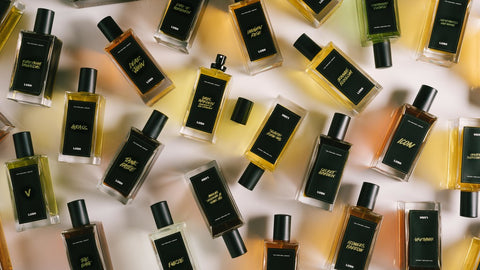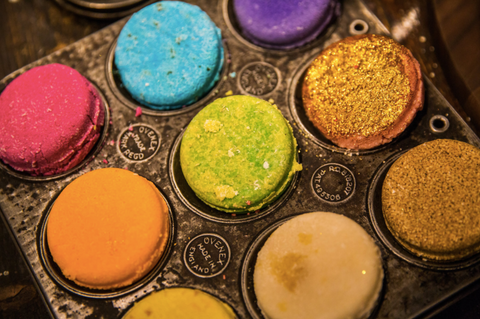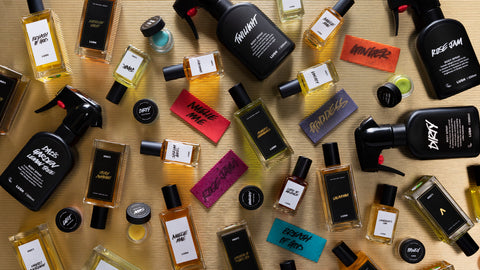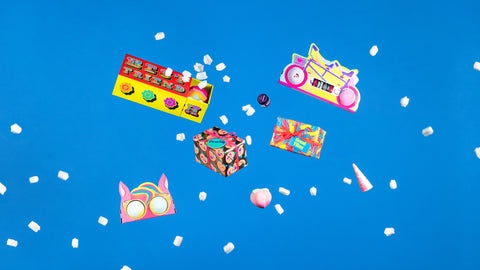Subtotal: 0.00 PHP

The Regeneration Story
What exactly is regeneration? With the Lush Spring Prize looming, head buyer Simon Constantine revisits the Prize’s regenerative roots, and tells the story of how sustainability grew into something much bigger.
It started as a question. What if sustainable simply isn’t enough?
This was a question I asked myself just after returning to the UK from Sumatra, Indonesia. There, I’d seen the impact of palm oil, a non-native plant that yields great amounts of valuable vegetable oil, and is used in everything from pastries to petrol—a miracle tree. A miracle, aside from the fact that planting it requires the removal of valuable pristine rainforest.
In Singapore, I’d attended a conference hosted by the Round Table on Sustainable Palm Oil (RSPO), a body of companies and non-profits who are debating how to make palm sustainable, and I felt underwhelmed.
I had seen for myself the frankly chilling impact of oil palms on the landscape, inconceivable amounts of land being clear felled, burned and then replaced with neat rows of palm plantations, devoid of life. Gone were the rare birds such as the hornbill that once called from the treetops. Gone were the most biodiverse tree species on earth; the wild rhino and elephant no longer foraging beneath them, and gone were the orangutan no longer swinging through their branches. In their place, a perfectly ‘sustainable’ plantation providing one single crop—palm oil.
If all that could really be deemed ‘sustainable’, then it was clear to me we were going to lose everything. And so, a seed was sown in my mind. Of course, it’s easy to take one industry, one country, and one privileged point of view to determine the answer. Almost immediately I heard the rebuffs: “But you’re from the UK, you cut your forests down for your prosperity and now you are preventing us doing the same,” or “You work for a business, you know that it’s not that simple. We’ve still got to make money.”
For a while, these comments stalled my questions. Who was I to judge someone else’s actions and livelihood? Or as Dad (Mark Constantine, the co-founder of Lush) always quotes: “Never break another man’s rice bowl.” Instead I spent time gathering a greater understanding and learning as I went.
I can’t say which one thing taught me the most. It may have been meeting those facing the encroaching Sahara in Northern Ghana or Southern Morocco due to climate change, seeing illegal logging in the Peruvian Amazon, or hearing about the impact of colonization on the Indigenous peoples of Australia and Canada. The list goes on.
Then, I met a friend who shifted the conversation—Paulo Mellett. He arrived into our business through a connection of passion and love, where he met his soon-to-be wife Ruth. He was fresh out of the eco-warrior camp with a few battle scars, having been trained by Greenpeace in scaling coal power station stacks.
At the peak of his activism career, Paulo had been splashed across the front page of a national newspaper, waving a flag atop the houses of parliament. He was naturally charismatic (as you’d imagine he would be) and he had a drive like no other.
Paulo was quite clear about one thing: activism was never going to change the world without one key factor. He quoted Buckminster Fuller: “To make the system obsolete, you must build a new one to replace it.”
And, as he retired himself from direct action, he waded knee-deep into building solutions instead of fighting problems.
Paulo’s route in was permaculture, a movement that started back in the 1970s as the world gained an ecological consciousness. A couple of gnarly Australians got together to fuse their learnings with native knowledge, modern science and agriculture, to create what they termed ‘permanent-agriculture’.
Permaculture has undergone many reinventions, but at its heart is a dense, design manual which lays out just how to turn nature’s power and patterns to your advantage and as such provide a much more sensible use of the earth’s resources. In essence, this was a meeting of the old world and the new; all it took was careful observation to help design a world for the future. This was how Paulo sold it to me, and I soon found myself on a journey of discovery with him - he would often call me his enabler.
Together we developed a small pot of money, so that we could find and fund those hoping to create a world that lived alongside nature, not just from it. This was idealistic and the first years were exciting as we created the Sustainable Lush fund (aka, the SLush fund). However, yet again we’d fallen into the trap of using the term ‘sustainability,’ when in truth we were witnessing the repair, restoration, and regeneration of eco and social systems, which came along with greater prosperity for everyone. As Satish Kumar, the environmentalist and editor of Resurgence magazine, puts it so elegantly, this is a harmonic playing of “Soil, Soul and Society” that weave together to create a future that feels truly balanced.
As Paulo and I continued along our SLush journey, I saw firsthand that through proper land use rivers can be brought back from the edge of drought via the careful planting of indigenous trees (they stabilize river banks and slow the release of water into the stream). I saw too that by planting in ways that observe and respect nature, you will benefit from the same thing a forest does, more even temperatures and rainfall, the foundation blocks of fertility and biodiversity.
I’ve seen forests that are food, that producing more sustenance than a solitary crop baking in the hot sun could ever provide. Of course, it’s experimental and not everything I or Paulo hoped would come to pass actually did, but it was and still is our lifeblood—the breath of inspiration which took us beyond sustainability, flowed through ours and others’ efforts and took us closer to our ultimate goal of becoming a company in the business of making a better world.
Of course, some of you reading already know that Paulo’s journey was cut short when he fell ill to malaria in Ghana—he was experimenting with earthworks and dam building—and sadly died from complications five months later in Brazil. However, his lessons weren’t wasted and, although idealistic, much of what he said has and will continue to come true.
A human society that doesn’t require the total destruction of the world around it to provide for itself is the problem of the 21st century. The projects we saw provide economic income, livelihoods, and an ongoing benefit both to the people and the ecosystem in which they live.
When Paulo and I met with Gregory Landua of Terra Genesis International (a team of consultant permaculturists) in San Francisco, he told us the emerging term for this was ‘regeneration’. This concept seemed to slot perfectly into the gap we had, when we asked, “Is sustainability enough”? We began to use this term to broaden the idea out for people who were either put off or confused by the term permaculture.
From that point on, we started looking at how we could move from supporting the handful of people we had come across, to taking this through our entire business structure, enabling the fronds of our reach to become nodes; fingers that would help to determine a way to act regeneratively wherever Lush found itself.
Of course, this is a work in progress. However, just last year our customers purchased 100 hectares of Sumatran palm plantation, which has now been felled. The process of forest restoration has begun on 50 percent of the land, and the other 50 percent will be turned to agroforestry, where a forest of food trees and plants will act both as a more biodiverse way of growing food and as a way to create income for farmers duped into moving from neighboring towns and islands to find wealth in palm oil. I believe this to be the model Paulo was describing, bringing back ecosystems while providing for people, for the next generation, for the regeneration.
To be sustainable, to sustain, seems to suggest life continuing despite us and our actions. But ‘to regenerate’ brings about a whole new framework of thinking. Could regeneration instead hint at life thriving because of us, with us firmly nested in it? There is a choice: to push ourselves further outside the natural patterns and boundaries of life until, like astronauts cut adrift in deep space, we are too far away to be saved. Or, is there an alternative: to make our way back within these boundaries using balanced, pragmatic solutions which allow all forms of life to flourish.
This then is a problem of design and not of human nature. We have created a society from our imagination and ingenuity. However, that imagination was ill-informed and limited in its achievements. Now we need a ‘system update’, a significant one, that allows for these changes—and my understanding is that regeneration is a big part of this.
I imagine a world where industries spring up that are cleaning oceans and rivers, that grow forests and that enable us to live healthily with the world. Anything else makes no common sense, forget the politics of it.
Is it utopian? Yes. Should we strive for it nonetheless? Probably...because, well, why wouldn’t you?
The Lush Spring Prize, hosted by Lush and co-operative Ethical Consumer Research Association, offers a £200,000 prize fund and other support activities, to help projects around the world that are working towards environmental and social regeneration.
Regeneration illustration banner by David McMillan.













